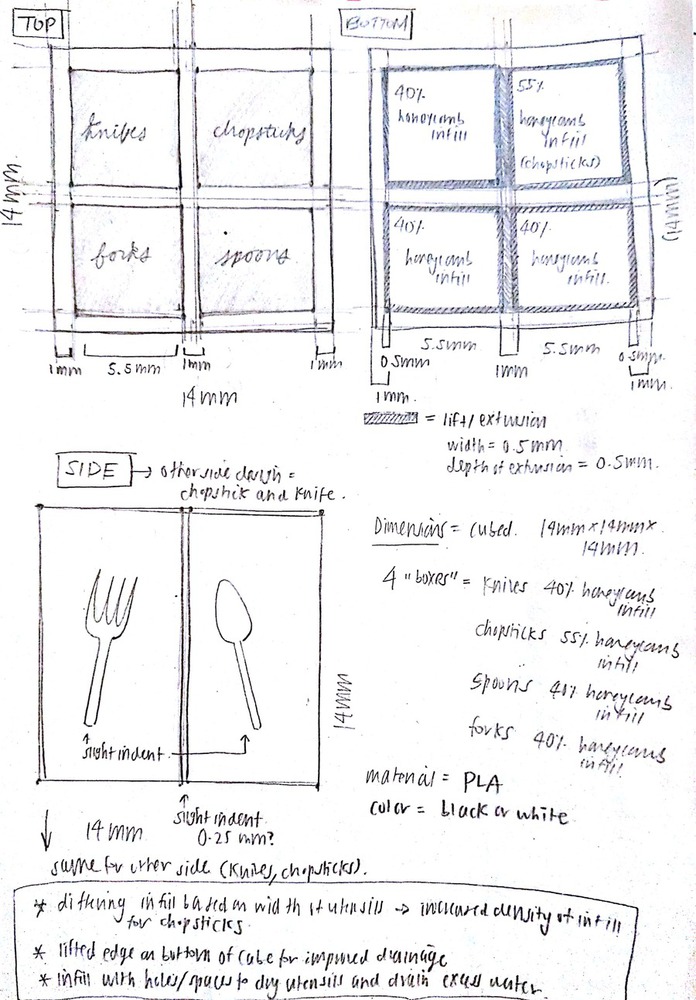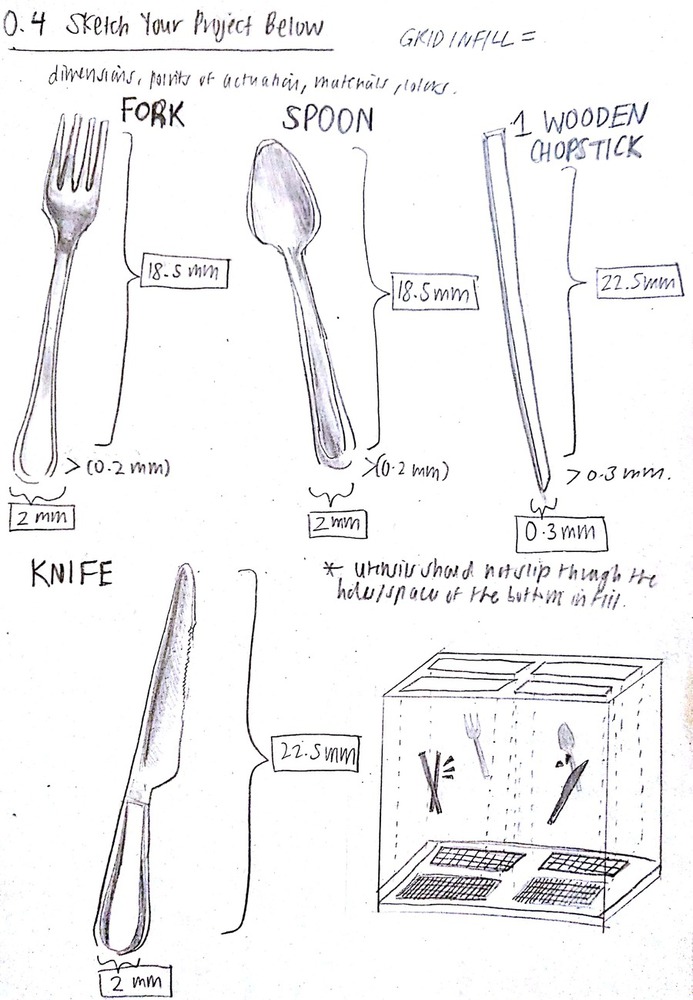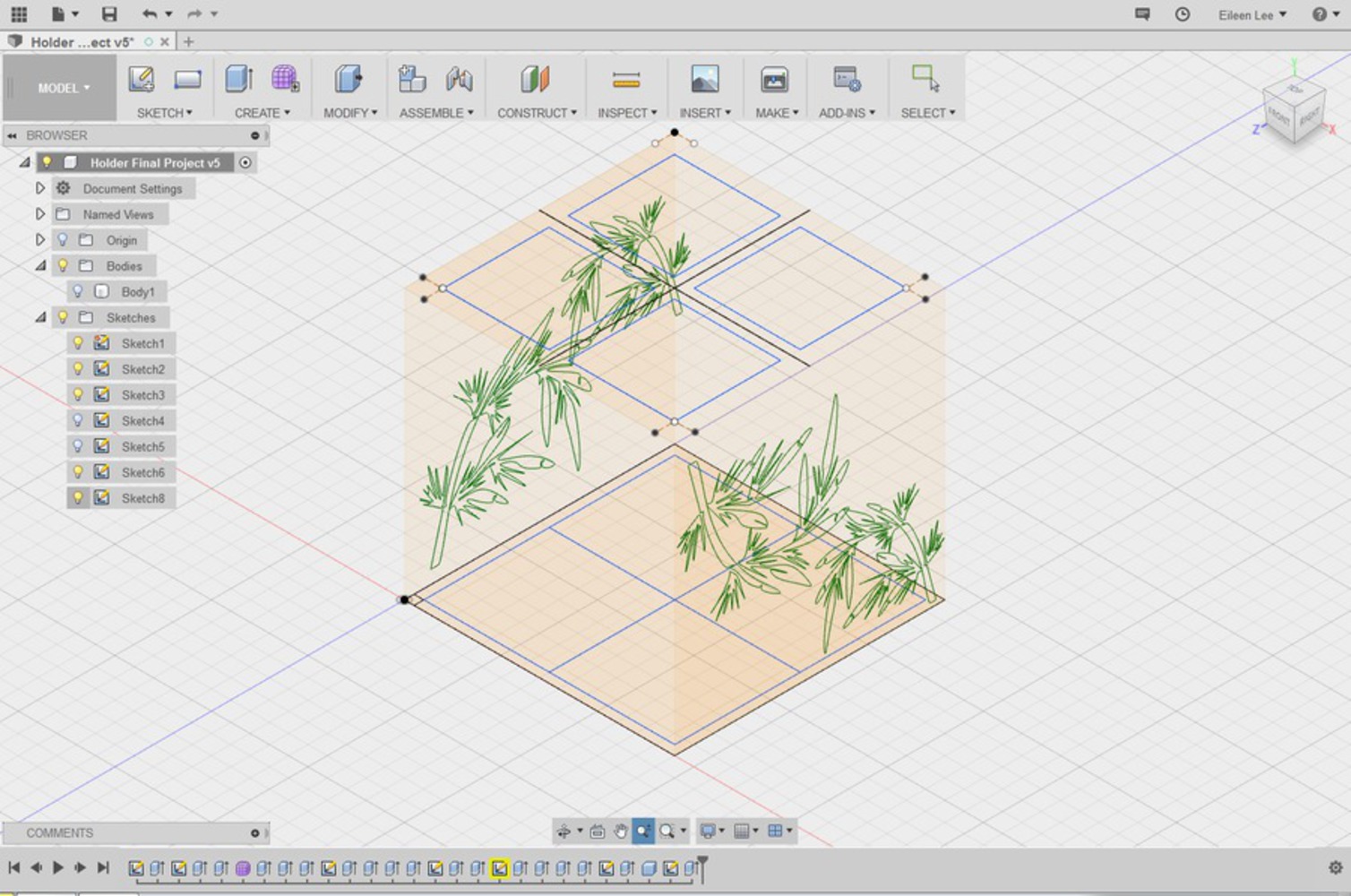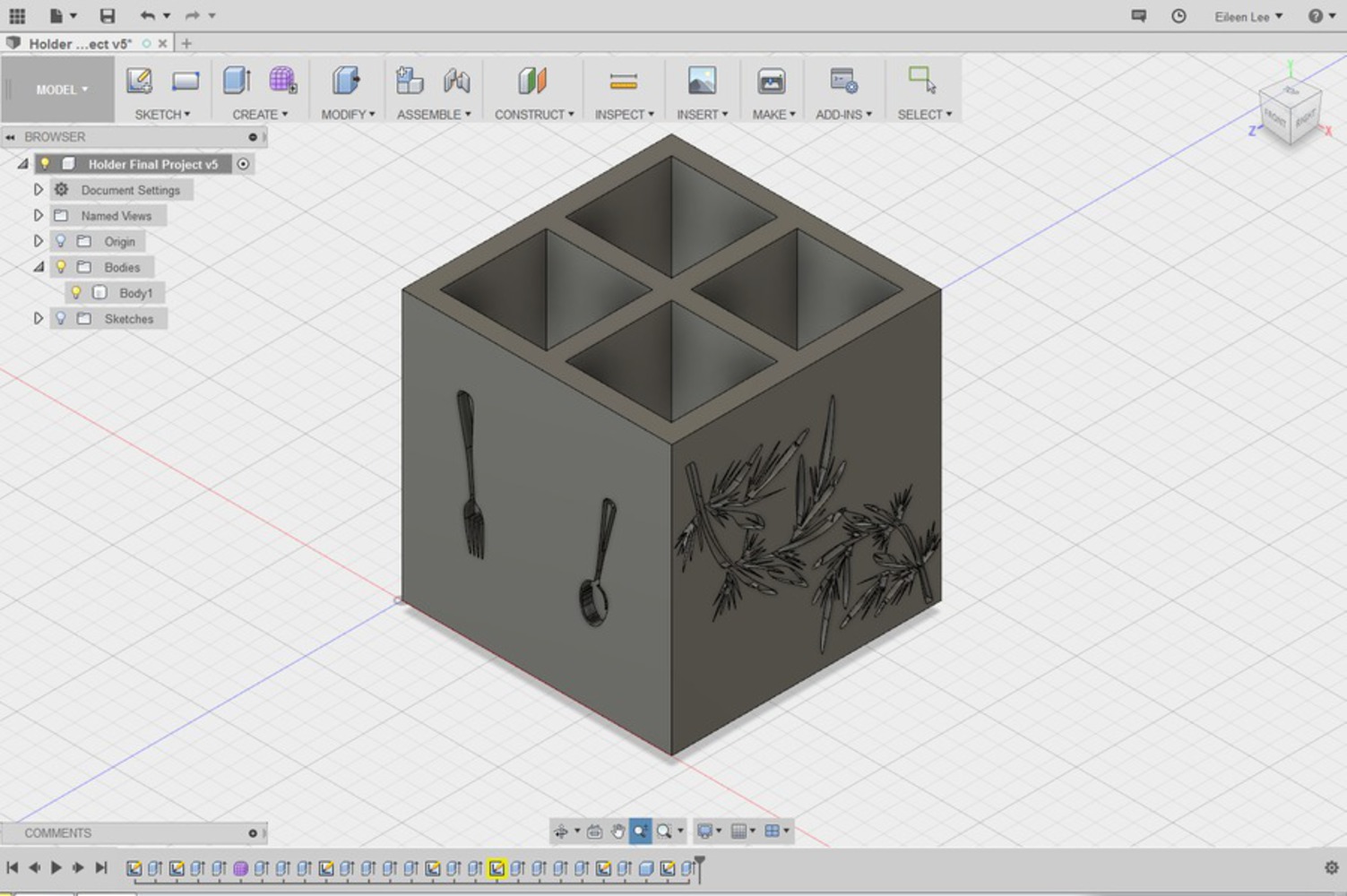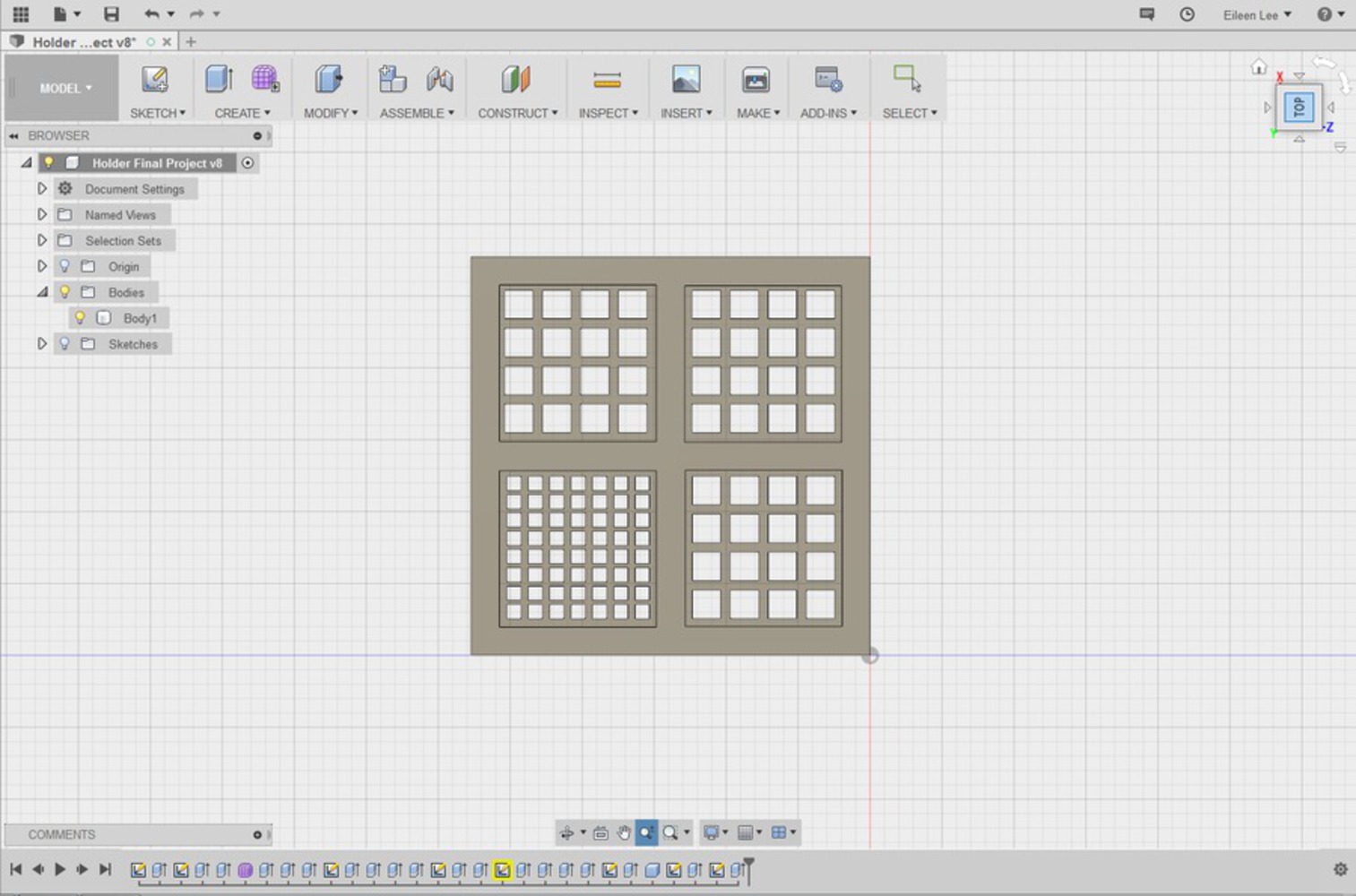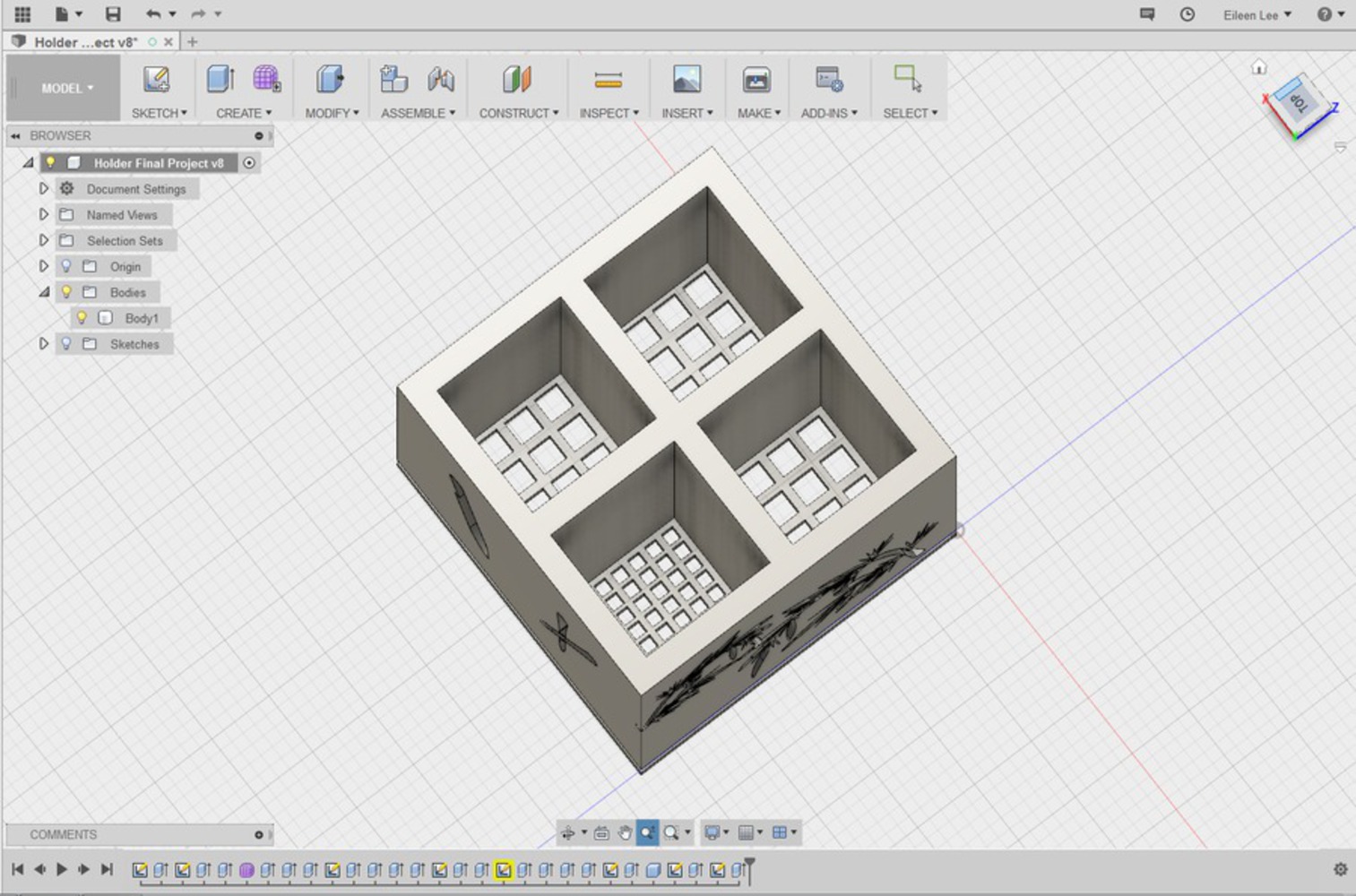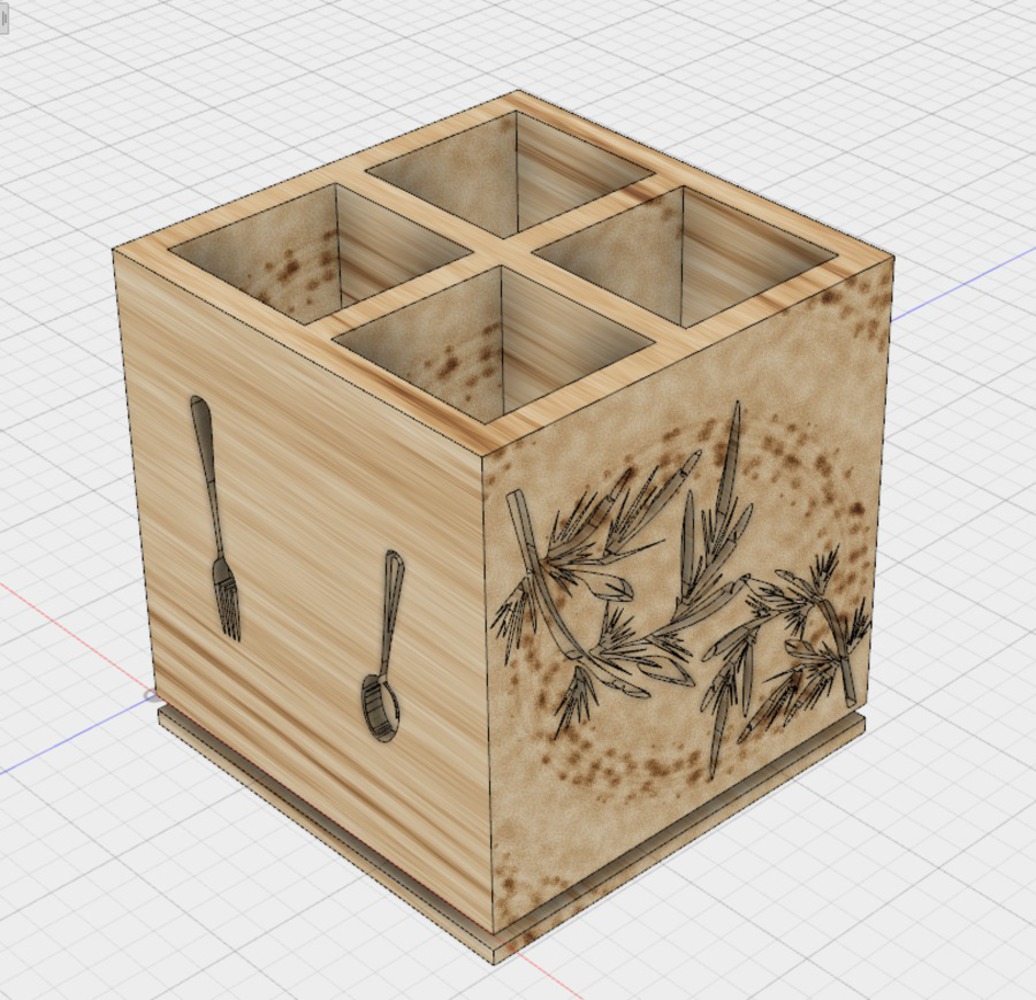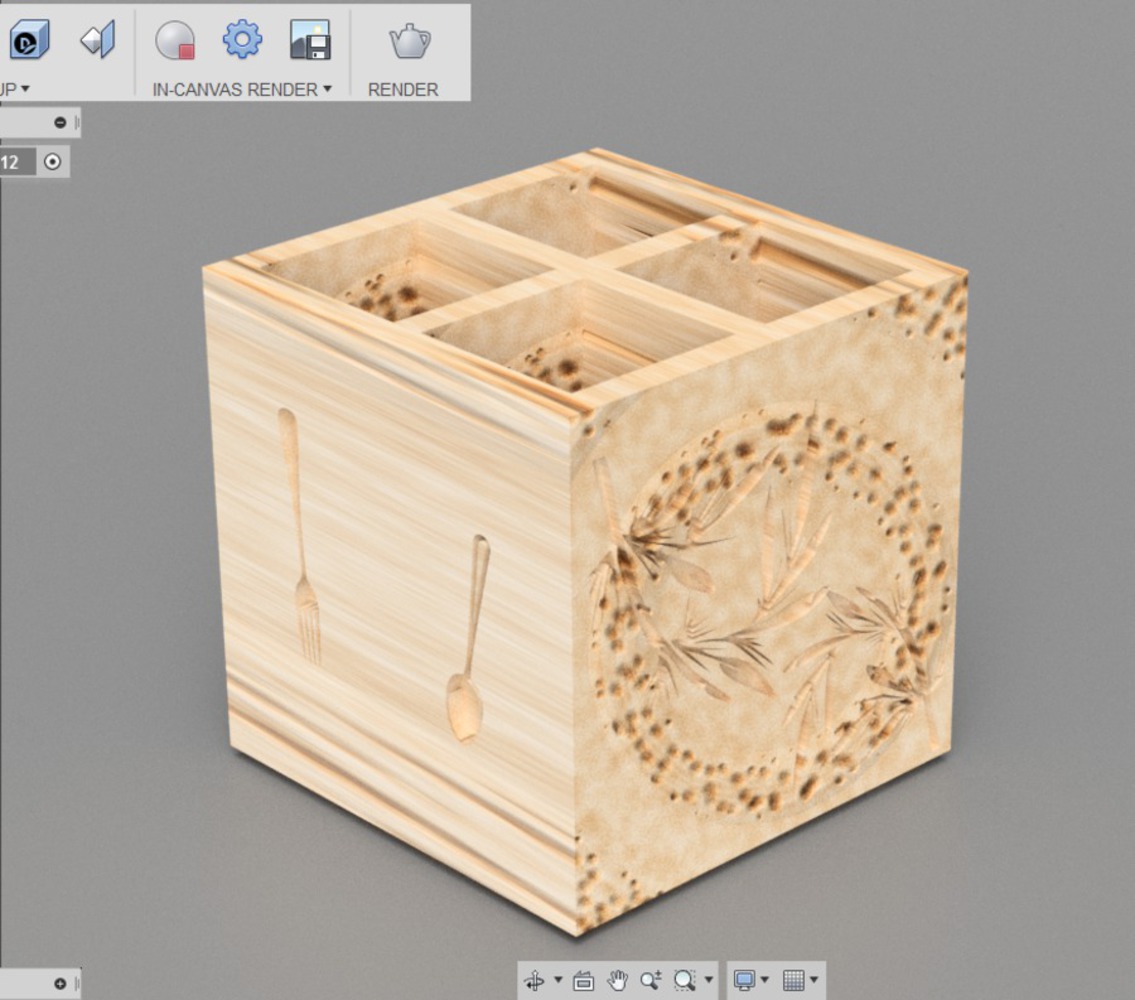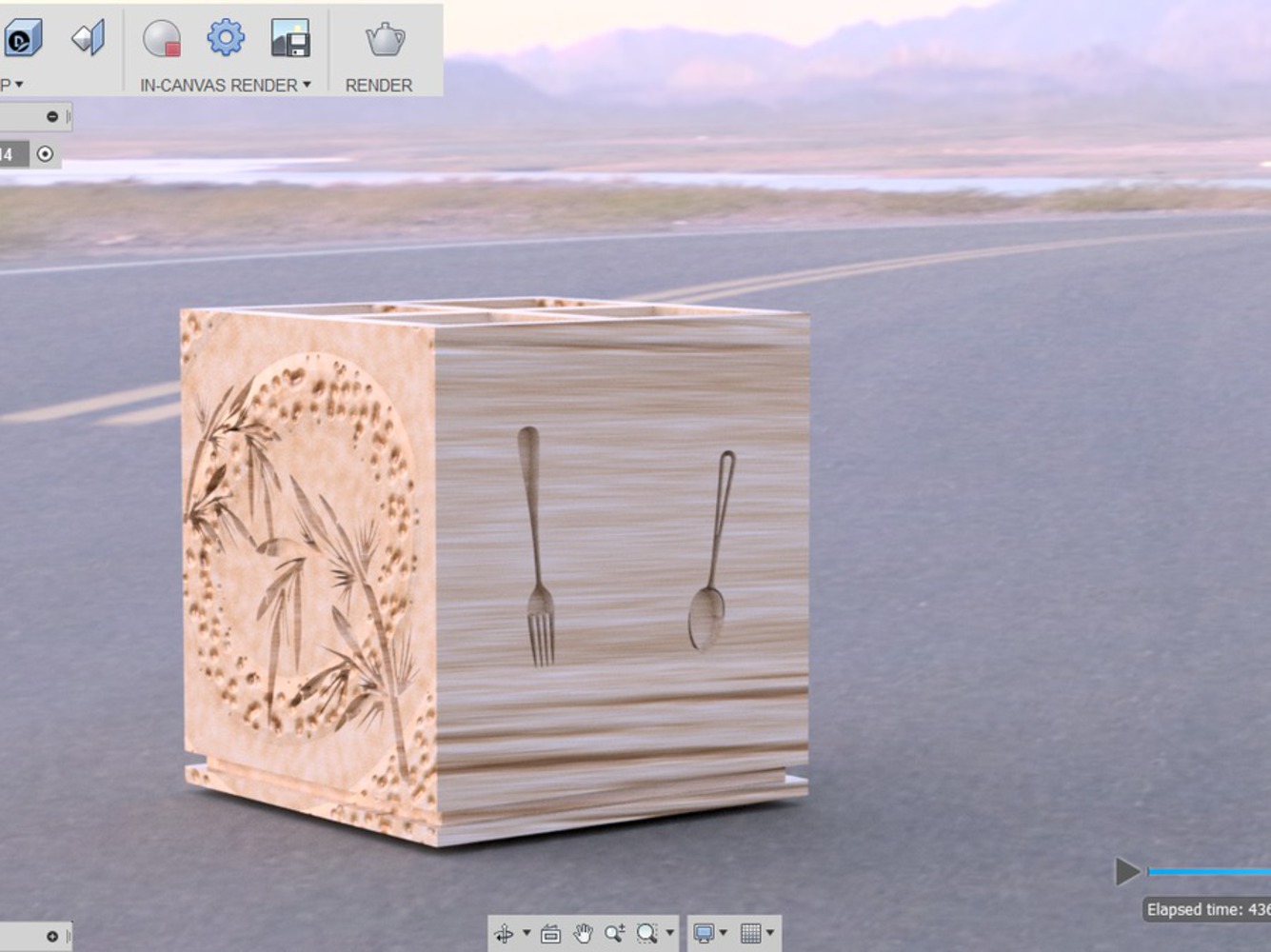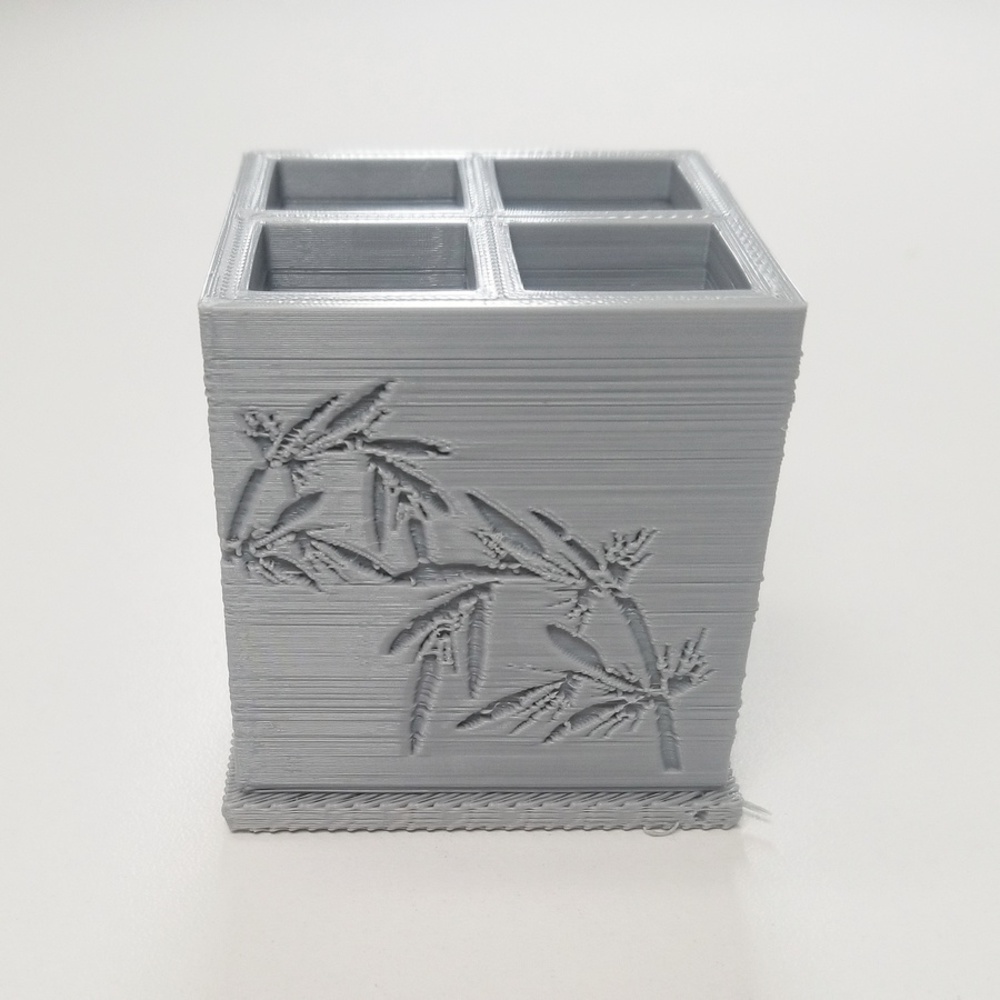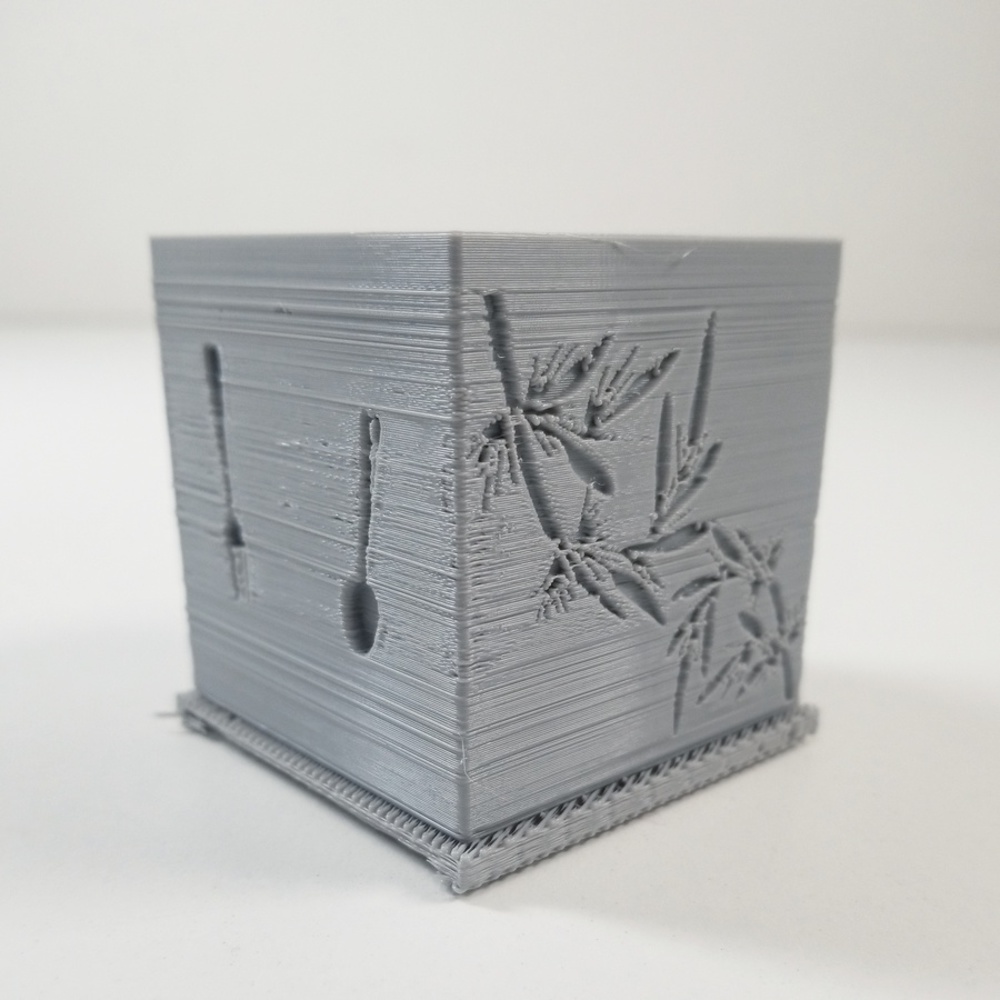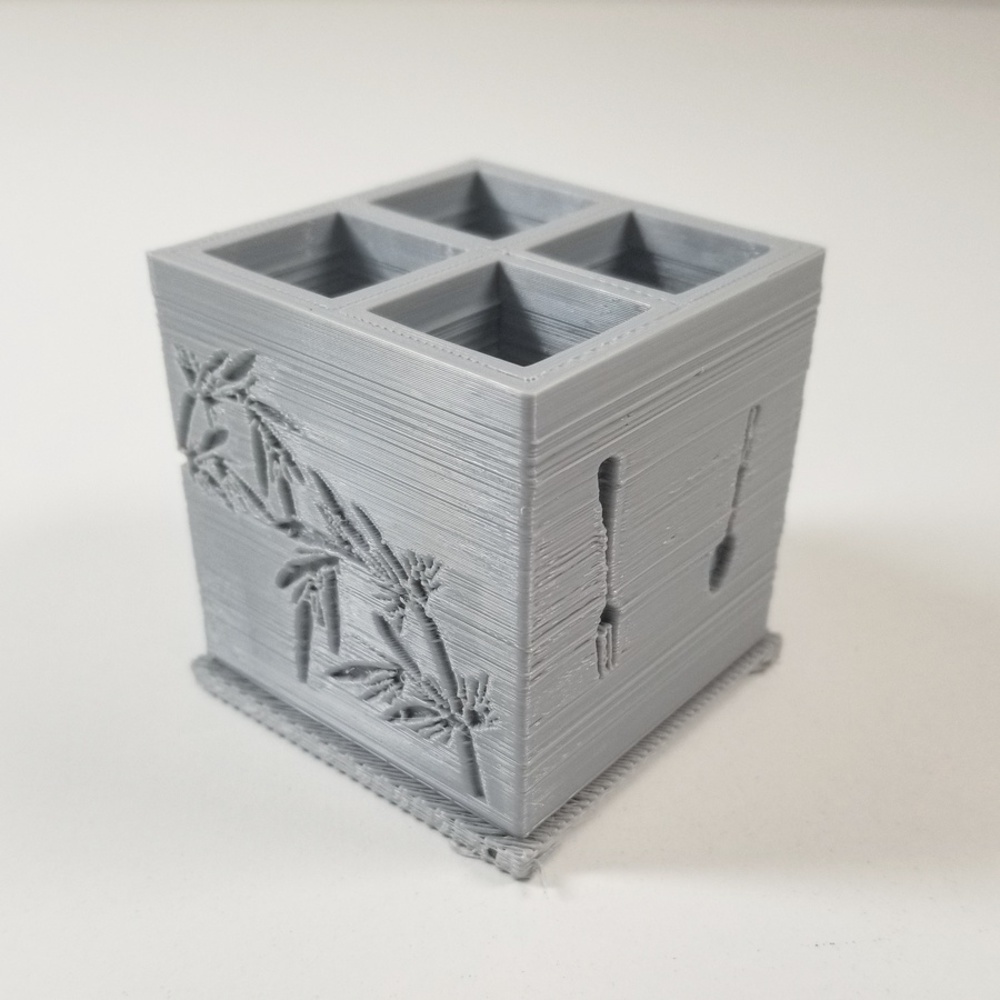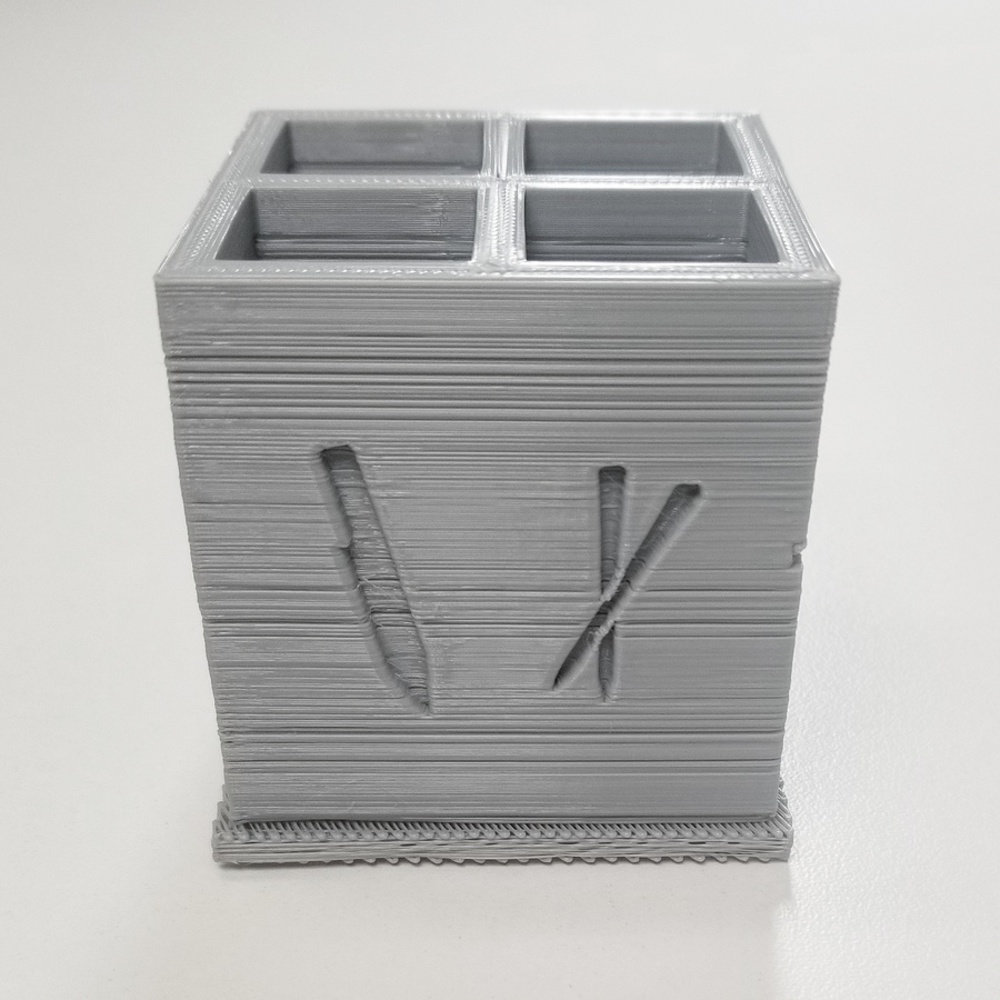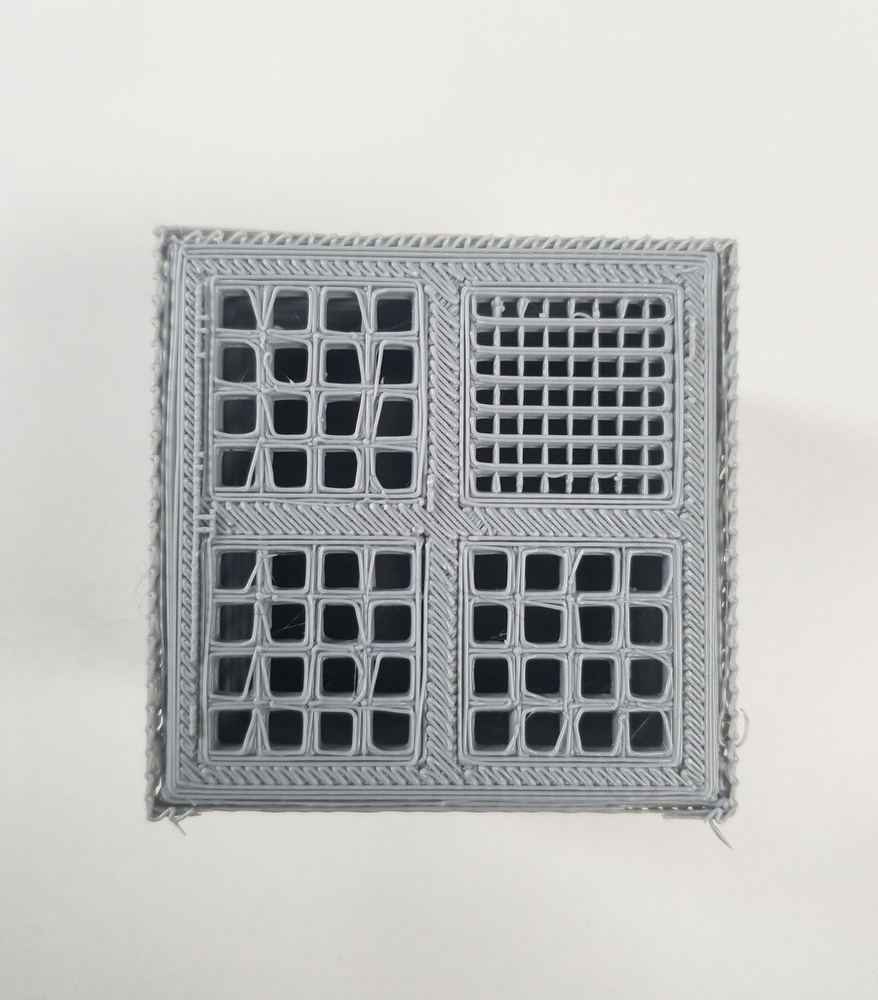Intention
Write about the big ideas behind your project? What are the goals? Why did you make it? What are your motivations?
My roommates and I have a cup where we place all of our utensils- forks, spoons, knives, spatulas, etc. However, they are all mixed together, causing a bit of trouble when choosing a utensil to take out. People usually organize their utensils and items in a kitchen drawer with sections, and I would prefer to have them easily accessible next to the kitchen sink. Unfortunately, I do not have an empty kitchen drawer to use, and I cannot place my large dish rack between the kitchen sink and the gas stove. When my roommates and I wash our dishes and utensils, we take the wet utensils to the living room table where we keep our dish rack, yet this is incredibly inconvenient and causes the floor to get a bit wet. So, I got the idea of combining a utensil rack and a utensil holder so that my utensils can be cleanly organized and more easily accessible for me and my roommates.

